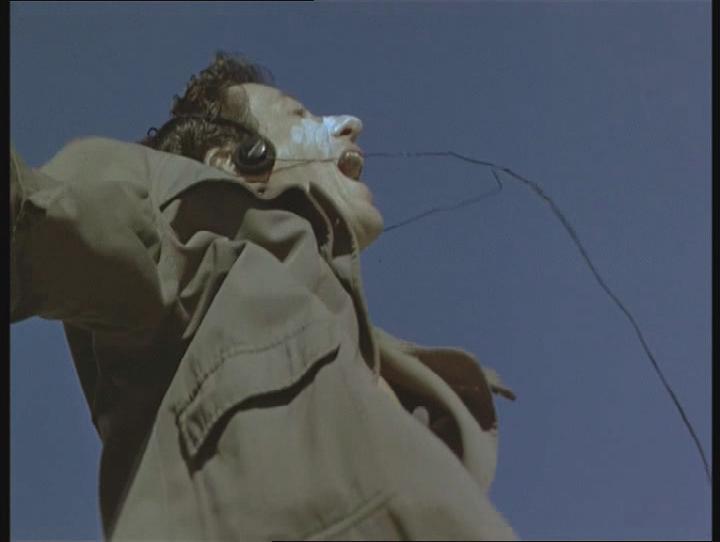It's A 4:3, 4:3, 4:3, 4:3, 4:3 World
We live in a world dominated by TV, and the shape of a TV screen, which is 4 units wide by 3 units high.

Why Change It?
Movies and TV have evolved. In the very early days, movies were projected in the same shape that TV is in now (4:3). With the advent of TV, movies widened in shape. Now, there are two common shapes for movies; 1.85:1 and 2.35:1.

How Do We Fit A Wide Image Onto A Narrow Screen?
Movies no longer fit onto a TV screen easily. How do we squeeze a movie of this shape -Panning & Scanning
The most common way is to chop parts of the movie off when it is displayed on TV and only show what are considered to be the more important parts of the picture. This process is called Panning & Scanning.Letterboxing
The second way is to shrink the overall size of the picture so that the entire movie fits onto the TV. This process is called Letterboxing.16x9 Televisions
The less obvious, but very much better, way to display a movie in its original aspect ratio is to widen the TV to fit the movie image, which is exactly what is happening with the introduction of High Definition TV (HDTV). HDTV has a screen shape that is 16 units wide by 9 units high (16:9 or 1.78:1 in the other parlance). ->
->
This method has two advantages. Firstly, it retains the original aspect ratio of the movie, so we see the movie as the director intended us to see it. Secondly, there is no loss in resolution
OK, I follow all of that, but what has that got to do with 16x9 Enhancement?
Remember back to what I said at the start of this article - we live in a 4:3 world. All of our TV and video recording equipment is geared around a screen that is 4:3 shaped. When you record something on a VCR, it is recorded in the 4:3 shape. DVD changes this. The image on a DVD can be stored in one of two shapes; this shape -
A DVD that is recorded with a 16:9 shape is one that is 16x9 enhanced.
So What?
On a 16:9 TV, a 16x9 enhanced DVD will be displayed at maximum resolution, and will preserve the original aspect ratio of the movie that it is showing, giving us the best possible image, both in size and in resolution.Wait a minute, I don't have a 16:9 TV, I have a 4:3 TV!
If you try and play back a 16x9 enhanced DVD on an ordinary TV screen, you will get distortion of the image. This is because you are trying to squeeze the wider image recorded on this type of DVD onto the narrower 4:3 TV screen.Does this mean that if I have a 4:3 TV that all 16x9 transfers will look funny on my screen?
DVD has been designed as a transition format between 4:3 TV displays and 16:9 TV displays. Every DVD player has the ability to take a 16x9 enhanced image, and downconvert it for display on a 4:3 TV, so that it displays correctly. At its simplest level, this is done by discarding lines from the 16x9 enhanced image, decreasing its resolution.
The net effect of this process is the same as that done by letterboxing the image in the first place - the image shrinks, and the image loses resolution. Don't forget, however, that the image on the disc itself is still in a higher resolution than that which is displayed on the screen. The resolution of this type of image is approximately the same as that which could be achieved with letterboxed laserdisc in the past.
Some 4:3 TVs have a built-in 16:9 mode which shrinks the overall height of the picture whilst retaining the same number of lines as in full screen mode - these TVs allow you to take advantage of the full resolution of 16x9 enhanced DVDs. Theoretically, you could achieve the same effect on any 4:3 TV by adjusting the vertical height of the image.
Yep, I'm following so far - so why should I care about 16x9 Enhancement? I don't have a 16:9 TV and I'm not likely to ever get one.
There are two reasons why you should care. Firstly, even though you have no intention of buying a 16:9 TV now, in the future you may change your mind. If you do, then you can take full advantage of the extra resolution on 16x9 enhanced DVDs. For the mathematically-inclined, 16x9 enhancement translates into a 25% increase in resolution of the image over an image that is merely letterboxed instead of 16x9 enhanced.Secondly, until the advent of DVD, 16x9 enhanced transfers basically did not exist. This means that any 16x9 enhanced transfer must have been created recently, using recent vintage equipment. Even on an ordinary 4:3 display device, these transfers will look better than older generation transfers by virtue of the fact that the technology used to transfer movies to video has improved markedly in recent years.
沒有留言:
張貼留言